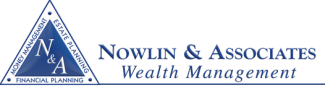
The Basics of Paycheck Protection Program Loans: Round Two
by Stacy Brasher on Jan 28, 2021
The year 2020 was unprecedented for so many reasons—all because of the COVID-19 pandemic. Many suffered from job losses, had to juggle childcare while working from home, and tried to keep their small businesses open with few resources. Thankfully, the Coronavirus Aid, Relief, and Economic Security Act (CARES Act) established a business loan program to help keep businesses across the country afloat during tough economic times.
You may have already taken advantage of the first round of Paycheck Protection Program (PPP) loans, but the good news is that a new COVID-19 relief bill was signed at the end of 2020, meaning more access to funds for businesses under the PPP. Here’s what you should know about eligibility, applications and amounts of the second round of PPP loans.
Am I eligible?
If you didn’t receive a PPP loan last year, you’re automatically eligible for one this year. If you did receive a PPP loan in 2020, your business must have suffered a loss of revenue last year in order to qualify for the second round.
For those who are applying for the first time in 2021, you’ll be eligible if:
- You were in business before Feb. 15, 2020
- Your business is still currently open
- You have fewer than 500 employees OR fewer than 500 employees per location
For those applying for the second time in 2021, you’ll be eligible if:
- You’ve used up your first PPP loan amount
- You were in business before Feb. 15, 2020
- Your business is still currently open
- You have fewer than 300 employees OR fewer than 300 employees per location
- You’ve had a reduction of 25% or more in gross revenue
How do I apply?
Applications for all PPP loans opened on Jan. 11, 2021, and are available until March 31, 2021. To apply, you’ll need to go directly through a lender. The U.S. Small Business Administration (SBA) has put together a tool to help you find a lender if you don’t already have one.
How much am I eligible for?
The second round of PPP loans will be calculated based on your average monthly payroll costs—if eligible, you’ll have access to a loan equal to 2.5 times this average monthly cost. To calculate your average monthly payroll costs, you can use records from the year period before the loan application or the calendar year of 2020 or 2019.
There are a few exceptions to these guidelines. For instance, if you own a food or accommodation business (you have a NAICS code beginning with 72) and you’re applying for your second PPP loan, you’ll be eligible for 3.5 times your average monthly payroll cost. Depending on the type of business you own (including seasonal, sole proprietorships and independent contractors), your eligibility and loan amount may vary. Refer to the SBA website for more details.
What are the terms of the second round loans?
The terms are the same as for the first round of PPP loans. At least 60% of the loan must be spent on payroll and the rest on other eligible expenses. Beyond payroll, rent and utility costs, the second relief bill has expanded eligible expenses to include:
- Operations expenditures, like software and other human resources needs
- Costs of property damage caused by public disturbances in 2020, not otherwise covered by insurance
- Supplier costs for purchase orders essential to operations and made prior to receiving a loan
- Worker protection expenditures, like personal protective equipment for staff or property improvements to maintain COVID-19 safety compliance
If you follow these guidelines, the loan will be fully forgiven. If you don’t follow the guidelines, the loan will have an interest rate of 1% and a term of five years. Your payments will be deferred—either for 10 months after the covered period ends or when you receive a verdict on your forgiveness status.
PPP loans have been a saving grace for some small businesses. Whether you’re thinking about applying for your first or second PPP loan, a financial professional can help you determine your eligibility, decipher loan terms and consider the impact of a loan on your business and personal finances.
*This content is developed from sources believed to be providing accurate information. The information provided is not written or intended as tax or legal advice and may not be relied on for purposes of avoiding any Federal tax penalties. Individuals are encouraged to seek advice from their own tax or legal counsel. Individuals involved in the estate planning process should work with an estate planning team, including their own personal legal or tax counsel. Neither the information presented nor any opinion expressed constitutes a representation by us of a specific investment or the purchase or sale of any securities. Asset allocation and diversification do not ensure a profit or protect against loss in declining markets. This material was developed and produced by Advisor Websites to provide information on a topic that may be of interest. Copyright 2021 Advisor Websites.
